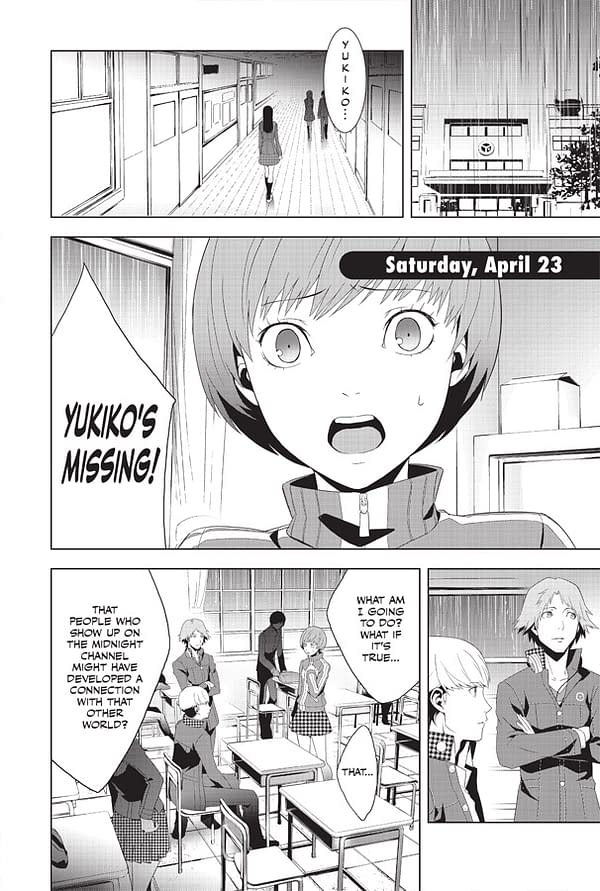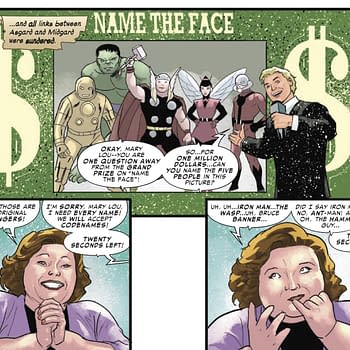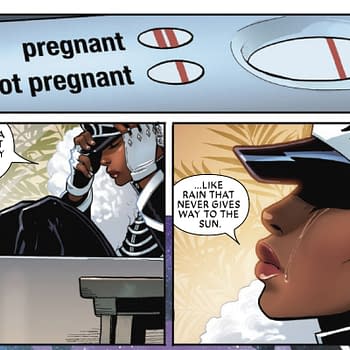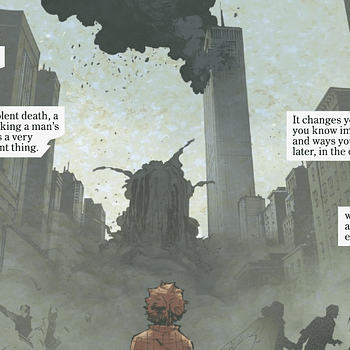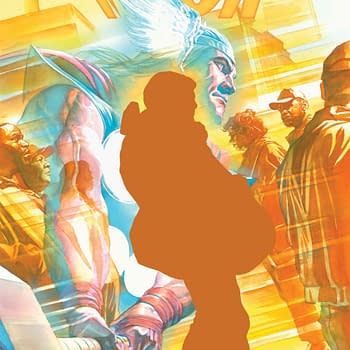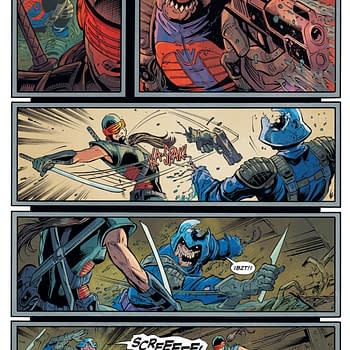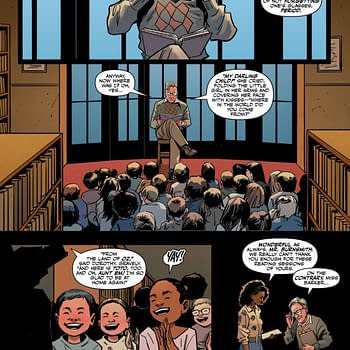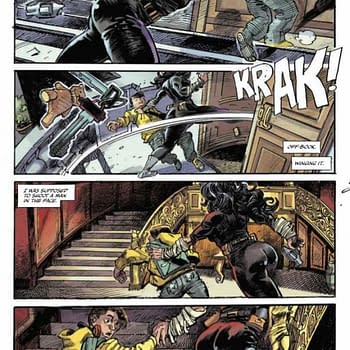Posted in: Comics, Look! It Moves! by Adi Tantimedh | Tagged:
Persona 4: From Video Game 2 Manga – Look! It Moves! by Adi Tantimedh
Adi Tantimedh writes,
The nice people at Udon Entertainment have sent over review PDFs of the official English translation of the Persona 4 manga series, which gives me an opportunity to talk about games and their translations into other medium, which I'd been thinking about for a while.
Japan has a different relationship with adaptations of popular stories from one medium to another. Here in the West, comic book and movie spinoffs from popular games tend to tell different stories from the original versions. In Japan, there is the assumption that fans want to experience in a different medium, be it manga or anime, the same story told as faithfully as possible, with any changes being there to clarify or provide new insights in the characters and the story. The latter tends to require a scriptwriter with a particular understanding of the original story.
One particular phenomenon in Japan is the manga adaptation of popular video games, where game stories are directly turned into comics with art that often follows the style of the game art as closely as possible and follows all the main story beats as faithfully as possible. Dialogue is replicated with new bits written to fill in the gaps. Virtually every popular video game in Japan has been adapted into manga since the 1980s, including the various Legend of Zelda titles, the Kingdom Hearts titles, the Fate/Stay Night series and their unending spinoff titles, and of course Persona 3 and Persona 4.
Udon Entertainment's decision to publish an English edition of the Persona 4 manga makes perfect sense: it's still a hugely popular game on Playstation 2, Playstation 3 and Playstation Vita with a rabid fan following for its Joss Whedon-style story of plucky teenagers who discover superpowers to solve mysteries and battle the powers of evil in an otherwise quiet town. The hero follows a common trop familiar in Shonen stories: he's a transfer student from the city who comes to live with relatives in a small town across the country and go to school while his parents are working abroad. There he has to navigate high school life, making a new set of friends and juggle homework with a social life in order to have a meaningful life. However, he discovers the Midnight Channel, a dark, dream-like dimension that can be entered via television screens, and he and his friends set out to solve the mystery of the serial killer who has been dragging unwitting people into it where they die there, but in the real world, they're found dead apparently from suicide.
The story is full of Japanese teenage hot-button issues: the need for empathy and meaningful relationships, the need to conquer depression and despair, the need for self-esteem, the need to conquer one's worst fears, issues of gender identity, family pressure to conform, and so on. It seems to me that the vast majority of Shonen manga and anime, that is, stories aimed at young boys, are concerned with teaching kids essential ideas about empathy, kindness, the need for loyal friends, the need to stand up for oneself and others, and to fight despair. The Persona series fulfill those criteria but also take a more psychologically sophisticated approach. The kids' superpowers involves them acquiring "personas", warrior avatars based on Jungian archetypes to help them fight monsters that are Jungian metaphors for despair, helplessness, deceit, duplicity and even death. The "personas" are expressions of the kids' will and strength, and the more they fight the demons that would destroy their psyches, the stronger they and their avatars become. There's an elegant simplicity in that design. Kids who play the games are literally learning psychological coping mechanisms in the guise of colourful superpowered stand-ins. One girl ends up literally battling her shadow self, a mean, bitchy version of herself that she's afraid people think she really is.
It's interesting to read the manga version after you've played the game. Where you previously had an unnamed hero that you could name after yourself, the main character is named Shouji Seta since the other characters can't not have something to call him. In the Persona 4 Arena spinoff games, he's given a different name altogether, so if you're obsessed with continuity, you can always say the main character in the games, manga, anime and spinoffs are alternate universe versions. Where you play through a simulacra of getting through each school day with the choice of going home to study, joining in club activities or hanging around town to recreate a video game version of a Japanese teen's daily life, here you're reading a story that cuts to the essential moments. The games were an interesting metatextual experience of mixing a simulation of the mundanity of school life with the escapist desire to get superpowers and go off on adventures battling evil. Manga and anime don't have that sense of direct participation, of course. They're stories to be experienced more passively and are as such perfectly good manga and anime versions of a story you would have felt active participation in when you played the game.
The manga is a way for fans who love the story to experience it and their favourite characters and moments again and again without having to wade through hours of the video game again. You can flip to the page where those specific moments are, replicating the way your brain might jump back-and-forth while recalling cherished moments. There's value in this aspect of the reading experience. It's not as passive as some might think, because the reader's participation is in finding and reliving those moments. For those who never played the game and are experiencing the story for the first time, it's as good an experience as they might hope to get. The art by Shuji Sogabe is gorgeous and faithfully recreates the style and mood of the game, and looks slicker than the anime because it's not hampered by budget restrictions.
Persona 4 is also a good mirror into the preoccupations of Japanese teenagers and the ongoing anxieties of Japan once you look past the escapist detective story and thriller elements. I always thought the Persona games were invaluable social documents on top of being fun genre entertainment.
Volume 1 and Volume 2 of Persona 4: The Manga are now available from bookstores and Amazon.
Still the same, no matter what translation at lookitmoves@gmail.com
Follow the official LOOK! IT MOVES! twitter feed at http://twitter.com/lookitmoves for thoughts and snark on media and pop culture, stuff for future columns and stuff I may never spend a whole column writing about.
Look! It Moves! © Adisakdi Tantimedh



